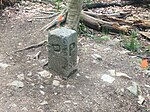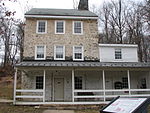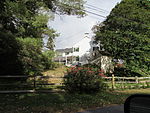McClellandville, Delaware
Delaware geography stubsUnincorporated communities in DelawareUnincorporated communities in New Castle County, DelawareUse mdy dates from July 2023
McClellandville is an unincorporated community in New Castle County, in the U.S. state of Delaware. McClellandville is located at the intersection of Delaware Route 896 and Wedgewood Road, northwest of Newark.
Excerpt from the Wikipedia article McClellandville, Delaware (License: CC BY-SA 3.0, Authors).McClellandville, Delaware
Wedgewood Road,
Geographical coordinates (GPS) Address Nearby Places Show on map
Geographical coordinates (GPS)
| Latitude | Longitude |
|---|---|
| N 39.709444444444 ° | E -75.776944444444 ° |
Address
Wedgewood Road 441
19711
Delaware, United States
Open on Google Maps










